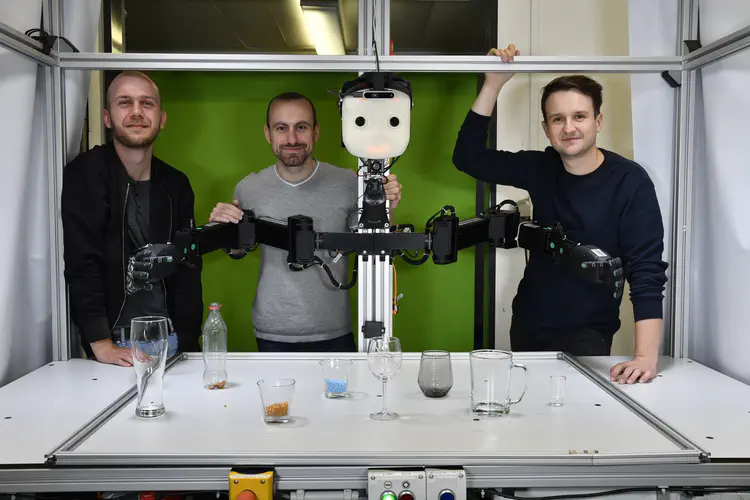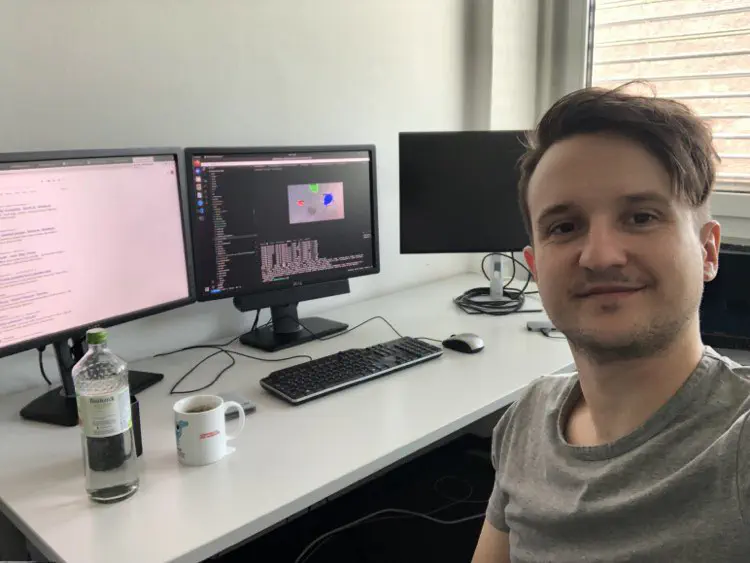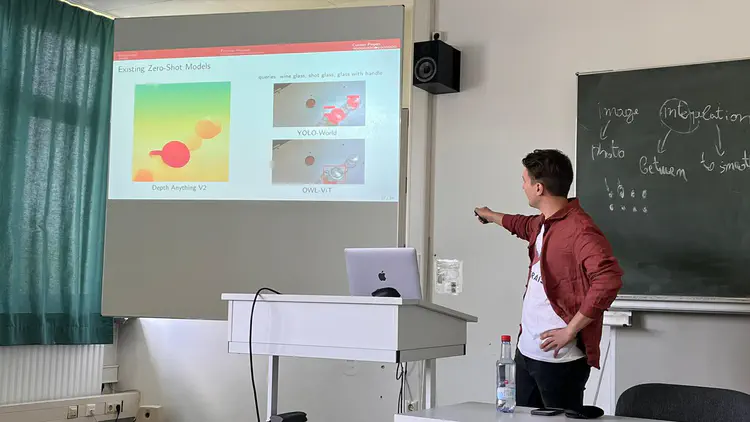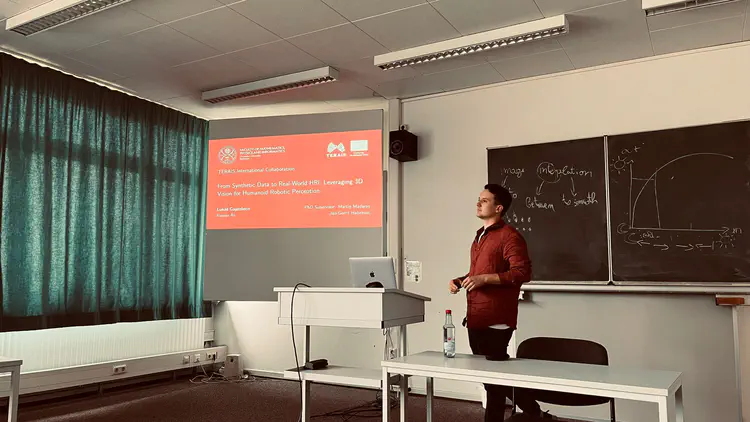Staff exchange between UHAM & UKBA

In September 2024, Lukáš Gajdošech from Comenius University in Bratislava (UKBA) participated in a two-week staff exchange at the University of Hamburg’s Knowledge Technology Research Group (UHAM). This exchange presented a unique opportunity to collaborate with the team working on the adult-sized humanoid robot NICOL, focusing on enhancing human-robot interaction in everyday scenarios.
Lukáš, whose ongoing PhD research focuses on 3D data, worked closely with the Hamburg team. His knowledge enabled collection of novel data, with a focus on object classification and surface fusion. Specifically, he was responsible for point-cloud processing and visual algorithm training. In combination with the UHAM team’s robotics expertise, NICOL gained the ability to differentiate between containers—like coffee mugs and wine glasses—and classify liquids based on color.
From a computer vision perspective, transparent objects pose significant challenges due to issues like occlusion, interreflections, and caustics, which complicate traditional perception techniques. Lukáš contributed his expertise in scene preparation and surface reconstruction to tackle these challenges, ensuring the robot could better perceive and interact with its environment. This interdisciplinary research led to the development of a novel interaction scenario, where NICOL autonomously pours a liquid into a user-selected container. The innovations from this collaboration have promising applications in social settings, like bars and restaurants, as well as in assistive technologies, particularly for supporting elderly individuals with daily tasks.
During the exchange, The University of Hamburg’s Knowledge Technology team welcomed Lukáš into their dynamic environment, where he was involved in lab meetings, presentations, and professional discussions that enriched his research perspectives. The collaboration proved to be mutually enriching. While Lukáš contributed new perspectives to the ongoing research, the Hamburg team provided insights that expanded his understanding of human-robot interaction. This exchange fostered a network of connections that has the potential to lead to future joint projects between the two institutions, paving the way for further breakthroughs in robotics and computer vision.



